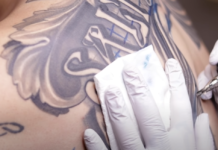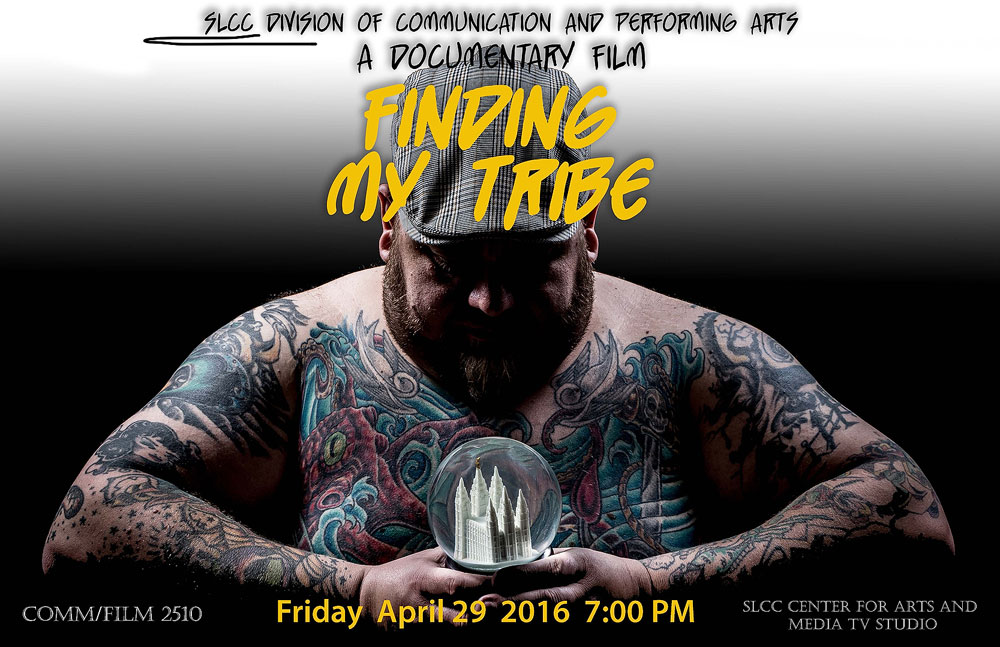Beyond just looking cool, tattoos often carry deep personal meaning, from reflecting life experiences to embodying core beliefs.
However, while the art itself may be the main attraction, tattoo artists also play a crucial role in this process by helping students turn their stories into art.
University students and tattoo artists spoke about their experiences that led to their tattoos, and artists detailed their journey towards tattooing.
Tattoos as a form of expression
Kate Davis, a nursing student at Salt Lake Community College, works as a psychiatric technician while pursuing her nursing degree. Davis described her tattoo of a semicolon on her wrist that she got after overcoming a battle with her mental health throughout high school.
The idea for the tattoo came after an experience while being cast in a production called “Be semicolon, there is no question,” patterned after Shakespeare’s “Hamlet.”
“The whole piece was Hamlet debating whether or not he wanted to complete suicide,” Davis stated. “The ensemble was Hamlet’s demons representing his negative emotions.”

Davis explained the scene as a representation of Hamlet’s inner struggle, as Hamlet says, “to be,” the demons taunt him by shouting “or not to be.” This back-and-forth reflects his internal conflict. Eventually, Hamlet cries out “to be,” drops the dagger and the demons vanish.
Davis described how this experience altered her life and pushed her on her own journey by choosing a semicolon over a period to represent that the story is not over. There’s more to come.
“Their story is not over yet, so that relates to suicide awareness, and choosing to continue your story of life,” Davis said.
The tattoo on her wrist holds deep personal significance. Davis now uses her experience to connect with patients at her job.
For other students, tattoos allow them to explore and express their identities.
Hyland Squire, a psychology major at Weber State University, does not have tattoos currently, but has a few ideas in mind that would reflect his personal journey, including a spiritual essence.
Squire shared some of the tattoo ideas he’s considered, including a wave and an image of a man walking through a door, which references “The Truman Show.”
“The wave means a few things to me, like representing the highs and the lows that we experience,” Squire said. “In a more spiritual way, I think everything that exists is kind of a manifestation or expression of like a substantial reality and so I think it could be really cool.”
A self-proclaimed “broke college student,” Squire hasn’t been able to afford a tattoo on his own.
According to an article from DaySmart.com, tattoo artists typically charge around $100 per hour depending on the size, though rates can vary depending on the artist.
Tattoos can also serve as a perfect icebreaker. Noah Brock, a nursing student at Joyce University, detailed his tattoos which have garnered attention.
“I think [the tattoos] on my arm, the flowers and the roses, I get a lot of compliments on those,” Brock said. “I also have the word ‘Wonder’ on my bicep which gets a lot of attention.”

The people behind the needle
Getting the right design is just one part of the process. Finding the right artist and shop is just as important.
Brock mentioned Fallen Angel Tattoo Shop as an option.
“The shop is women owned, and the floor of the shop is like a galaxy theme,” Brock said. “It is where I got one of my favorite tattoos. I have a sun tattoo on my back that reminds me of my friend who passed away, she had a similar one on her collarbone.”
While Brock has had great experiences at Fallen Angel Tattoo Shop, other students have also found talented artists who align with their vision for tattoos.
Michael Rees is a local tattoo artist in Salt Lake City. Rees began his career in tattooing after majoring in marketing and working in corporate marketing for eight years.
Rees noted he loved the creative side of marketing and did art on the side.
“Art has always been an interest of mine, but I never really saw it as a career,” Rees said. After being laid off in December 2022, he began the new year reflecting on his career direction.

Rees discovered that many tattoo artists start their careers through apprenticeships, which typically take about two years to complete. Due to financial reasons, Rees sought a faster route.
He completed his apprenticeship through an online course, where he learned the history of tattooing and began practicing on silicone skin. Rees now works at EmberSteel Tattoo Studio in Salt Lake City.
Rees shared some pointers for students who may be interested in pursuing tattooing as a career.
“Learn how to do figure drawing, learn how to do sketches. Learn about like tones and values and contrasts and compositions,” Rees said. “There are some tattoo artists who get into it not knowing the basics and because of that they might be able to apply a tattoo well, but the design and the composition itself is not great.”
Rees specializes in black and grey traditional, neo traditional and illustrative tattoo designs. Other talented artists in the area bring different approaches and techniques to the table.
Natalie Harbertson, who specializes in fine line tattoo art, began her journey in April of 2024. After completing her associate degree in general studies at Weber State University, she was unsure of the next step.
Harbertson initially landed in construction, but quickly realized it wasn’t the right fit for her and decided to take a more artistic path.
“I started digging into art and I ended up going to get a tattoo from my favorite tattoo artist. Her [social media] handle is ember.ink, so shout out to her,” Harbertson said. “She ended up mentoring me that day.”
Harbertson took many art classes and found illustration courses and learning the basics of art to be especially beneficial.

As the stigma around tattoos fade, both students and artists are embracing body art as a way to share experiences, struggles and passions in a deeply meaningful way.
During her first year of tattooing, Harbertson focused on reducing stigmas surrounding the tattoo community.
Harbertson, who currently works at Rising Ink in Riverdale, emphasized the importance of education and the support of fellow artists in helping to diminish the taboos and stigmas that some people may still have.
“I think kind of getting rid of the stigmas around what tattoo shops look like, and what tattoo artists do because I feel like that[s] really [what] shy’s people away and it’s important to break those stereotypes for artists who are trying to find their way into that particular business,” Harbertson said.
“Realizing there’s such a vast light. There are so many types of artists that are tattoo artists, and I think we need to stop looking at tattoo artists and expecting a certain thing,” Harbertson ended.




